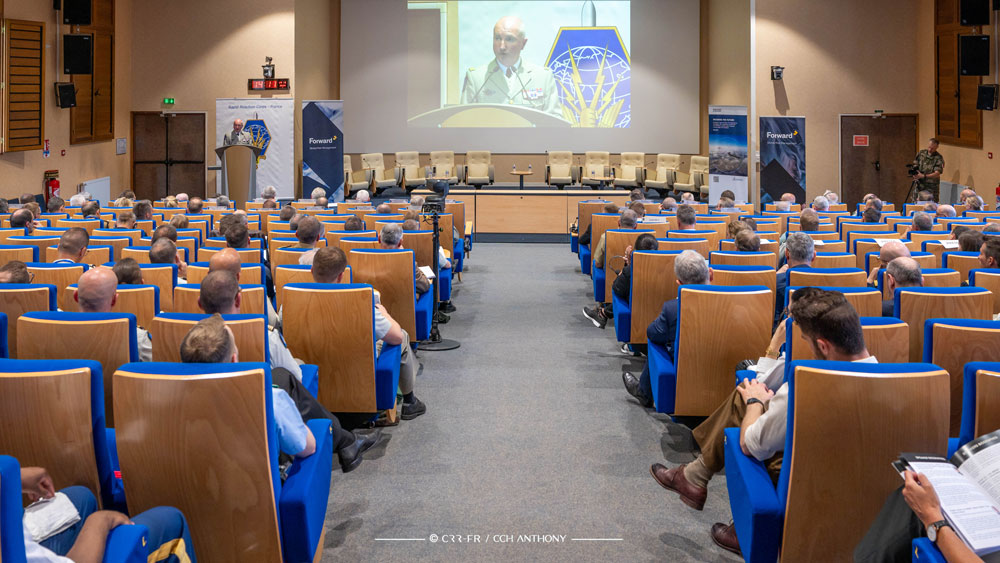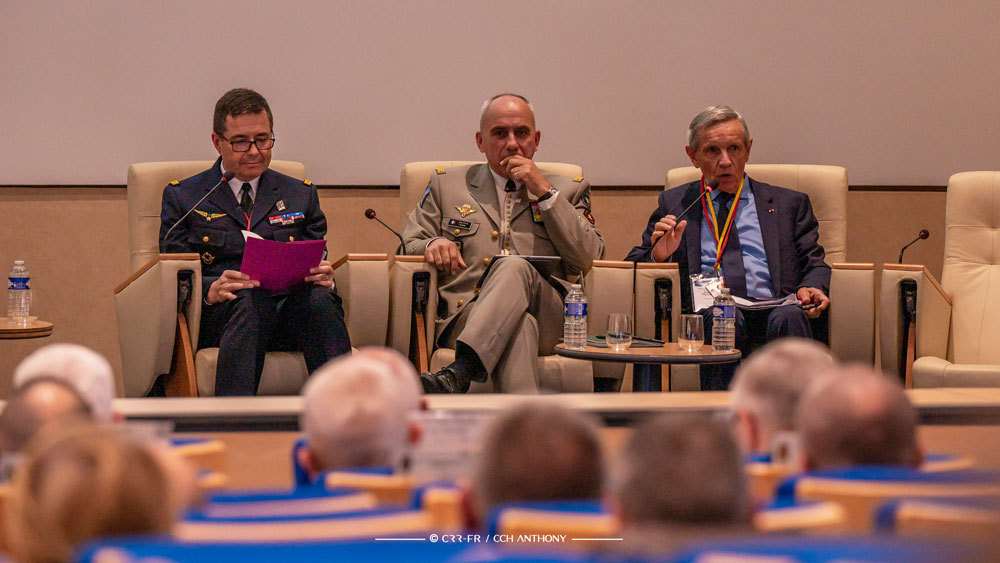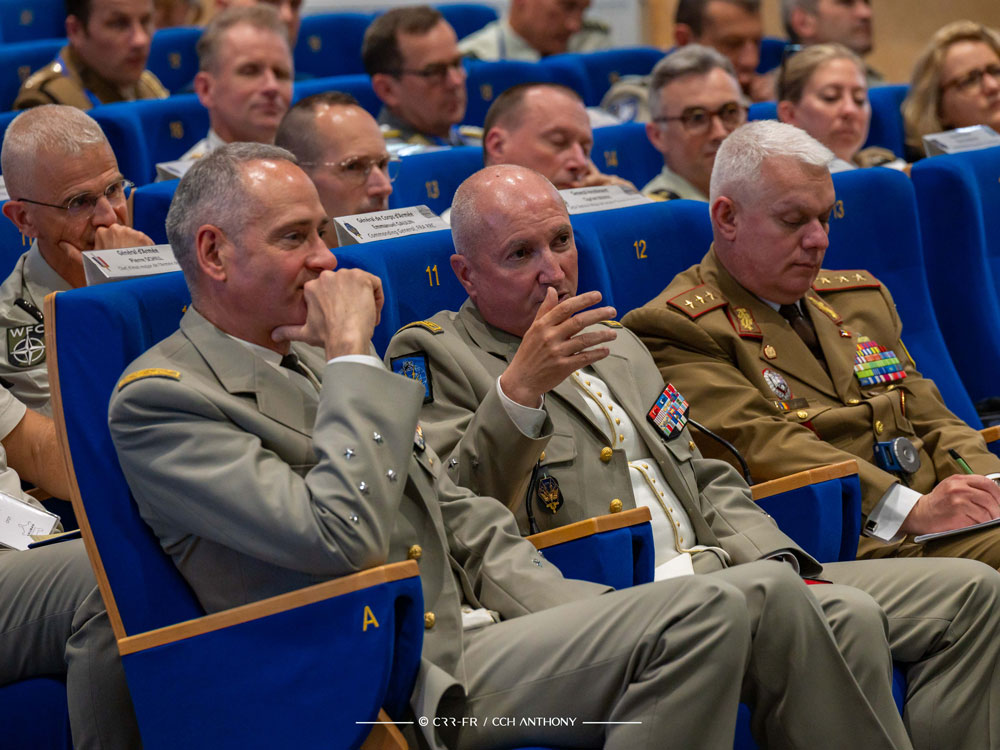Key topics of the conference included rethinking operational planning to meet the demands of high-intensity engagements and the associated “hyperdestructiveness” of modern warfare. Discussions also delved into the hybridity of command posts and organisational modularity, exploring the balance between concentrating and de-concentrating capabilities. The alignment of capability development with innovation and operational needs was highlighted, emphasising the necessity of integrating cutting-edge technologies. The role of digital technology in training and education was also examined, with a focus on the challenges and constraints these advancements pose for contemporary military preparedness.
Speakers and participants highlighted the changing landscape of modern warfare, marked by the return of high-intensity conflicts. They emphasised the importance of robust links between different domains and effectors in the organisation of command structures and the critical need for adaptability and survivability of command systems to maintain full combat capacity over prolonged engagements. Speakers emphasised the need to rethink operational planning needs to achieve immediate and effective outcomes.
Participants also discussed Phase 0, the planning and initial deployment stage, as a key challenge, with an emphasis on the need for efficient organisation and deployment of forces. It was concluded that modernising equipment and capabilities is crucial for ensuring that military units can operate effectively across all environments and areas of conflict. This includes medium and heavy equipment, as well as emerging technologies which are already having a tangible impact.
- Lessons learned from current conflicts: more mobile, modular and resilient C2 structures and organisation
The Ukrainian conflict has highlighted the high vulnerability of command posts (CPs). CPs are a primary target for Russian forces, with a narrow window of opportunity for attack, often as brief as 15 minutes from discovery to strike. The primary challenges for CPs are survivability and maintaining communications in an increasingly transparent modern battlefield, primarily due to the extensive use of drones. To enhance survival, CPs must adopt agile, reactive organisational structures and embrace dispersion tactics. Traditional camouflage methods are no longer sufficient: CPs in open terrain are highly vulnerable, necessitating relocation to urban environments or areas with radiation saturation for concealment.
The unpredictability of high-intensity conflicts challenges pre-set plans, emphasising the need for rapid decision-making cycles, precise intelligence transmission. In Ukraine, the maritime and aerial domains see mutual neutralisation by belligerents, making the land domain the primary arena of conflict. The risks of a symmetrical confrontation highlight the lack of sanctuary in the depths of the battlefield.
The conflict in Ukraine has also revealed the crucial role of electronic warfare and the near-exclusive reliance of C2 on internet-based and civilian communication systems, primarily Starlink. Tactical information is frequently transmitted via 3G/4G networks. This conflict underscores the central role of software as the backbone of modern military systems. They ensure effective command and control, situational awareness, and communication across the battlefield. These IT tools are no longer just aggregators of tasks but flexible, modular collections of tools adaptable to specific missions. Ukrainian forces exemplify this adaptability with their development of various C2 tools which can handle diverse signals, including Wi-Fi.
This flexibility is crucial in high-intensity combat, where systems often need constant reconfiguration to mitigate strikes and destruction. Ukrainian forces are also rely on unencrypted communications via secure messaging apps on tablets, facilitated by robust US support against cyber attacks, preventing a cyber “Pearl Harbor”.
Telecoms services such as Starlink have played a key role in providing resilient communication channels. The agility of Ukrainian C2 tools like Delta, developed rapidly under conflict conditions, emphasises the need for striking hard and early to prevent prolonged attrition, utilising a mix of low-tech and high-tech resources to achieve strategic saturation and penetration.
- Ensuring the evaluation and viability of allied C2 in an increasingly complex environment
In an increasingly complex operational and technological landscape, the Allies’ command and control (C2) systems must evolve to remain viable. This evolution requires integrating new tools and technologies into existing planning processes and harmonising national plans. The proliferation of multidomain operations—encompassing cyber, space, and information domains alongside traditional military arenas—demands a synthetic pragmatic approach focused on adaptability and flexibility.
The current context presents an excellent opportunity for the Allies to redesign C2 frameworks. Embracing resilience and inherent interoperability, C2 systems must evolve to become natively multi-domain and multi-echelon capable (M2MC). A distributed C2 model, as opposed to a single, harmonised bloc, will provide NATO with agile and resilient complementary forces. Greater battlefield transparency requires streamlined command structures, countering the trend of increasingly large headquarters bogged down by massive information volumes, which slow decision-making.
Reducing the physical size of command posts while ensuring effective reach-back capabilities is crucial. Striking the right balance between distant and deployed command structures will maintain operational coherence. Command structures must be resilient, with dispersed C2 elements to avoid detection and ensure operational continuity. This involves fostering a culture of agility, and developing tailored C2 models to suit specific situations. Interoperability within the alliance remains paramount. Achieving the required level of interoperability ensures cohesive operations despite the diverse national systems in play. Dispersion of forces enhances resilience during sustained attacks, and delegating decision-making to lower levels is essential for maintaining agility. However, this requires overcoming cultural challenges within military hierarchies and improve decision-making processes and operational effectiveness.
- Transforming Command and Control: The power of AI in data-centric systems
The integration of artificial intelligence (AI) into C2 systems is both an opportunity and an imperative which must be addressed immediately, taking a pragmatic and incremental approach. Many nations are already implementing and using artificial intelligence for their armed forces, particularly Western nations.
AI is crucial for enabling interaction across various domains, sensors, and effectors within complex operational and informational environments. This evolution demands careful consideration of the level of autonomy granted to AI systems, particularly in the context of military planning. The profound transformation of the military domain, driven by the convergence of increased computing power, high-speed connections, and new application functionalities, underlines the need to thoughtfully integrate AI into C2 processes.
Adopting advanced technologies, including AI and cloud services, is essential to enhance operational efficiency and maintain strategic superiority. AI can prioritise data management and dissemination, ensuring that the right information reaches the right location at the right time. For NATO, the challenge lies in effectively embedding AI into its command structures and ensuring the trustworthiness of its data and models. The move towards combat cloud architectures further highlights the importance of data and AI in modern systems, enabling distributed operational C2 functions.
The potential of AI in distributing operational control, such as managing the kill chain, illustrates its transformative impact on C2 systems. As AI continues to evolve, it will play a pivotal role in creating more agile, responsive, and effective command structures. This transition requires not only technological advancements but also cultural and structural adaptations within military organisations to fully realise the benefits of AI-enhanced C2.
- From operational requirements to capability needs: innovation and civil-military synergy
The increasing complexity of modern operational environments demands that development programmes account for a myriad of new challenges and variables. Software now lies at the heart of military systems, evolving from merely coordinating tasks to becoming a modular collection of adaptable tools. This adaptability is exemplified in Ukraine, where drone software is updated every six weeks to counter evolving adversary tactics.
Historically, closed architectures and cumbersome systems have hindered NATO’s agility. To overcome these obstacles, a shift towards hybrid civil-military capabilities is essential. This includes employing civilian technologies for digital camouflage and building open, civilian-based architectures. Hybridisation facilitates dispersion and accelerates command loops, enabling decentralised digital capabilities to develop applications tailored to emerging operational needs. Balancing the need for immediate solutions with inherent long-term capability development of complex military systems is crucial.
Recent conflicts have demonstrated that investing heavily in large hardware with reduced manoeuvrability is counterproductive, as such assets are difficult to disperse and render agile.
Addressing the need to both accelerate and simplify development processes while ensuring long-term robustness is a delicate balancing act. It is key not to pit these two approaches against each other but rather to find a harmonious integration. Procurement processes should shift from focusing solely on traditional military assets like tanks and ships to incorporating modern digital solutions. However, reliance on civilian capabilities must be approached with caution to ensure security and operational integrity. NATO must refine its capability mechanisms to navigate these dual imperatives effectively.
Innovation in military contexts extends beyond technological advancements, but also encompasses conceptual innovation. Collaboration with industry is vital, treating the latter as a key domain and engaging it in upstream planning.
Developing technological roadmaps and innovation strategies which integrate commercial off-the-shelf (COTS) technologies into military operations is essential. By fostering civil-military synergy and embracing both technological and conceptual innovations, the military can adapt to evolving operational requirements and develop capabilities that meet future challenges head-on.
The 6th Vauban Session highlighted the pressing need to transform command and control (C2) frameworks to meet the demands of high-intensity conflict. Military leaders and experts emphasised the importance of modular, resilient and agile C2 structures, using advanced technologies such as AI and digital communication systems. Lessons learned from the Ukraine conflict underscored the need for rapid decision-making, effective information sharing, and robust survivability of command posts. Going forward, the integration of civil-military synergies and a pragmatic approach to capability development will be critical for NATO and Allied forces to maintain strategic superiority and operational readiness in the evolving landscape of warfare.





